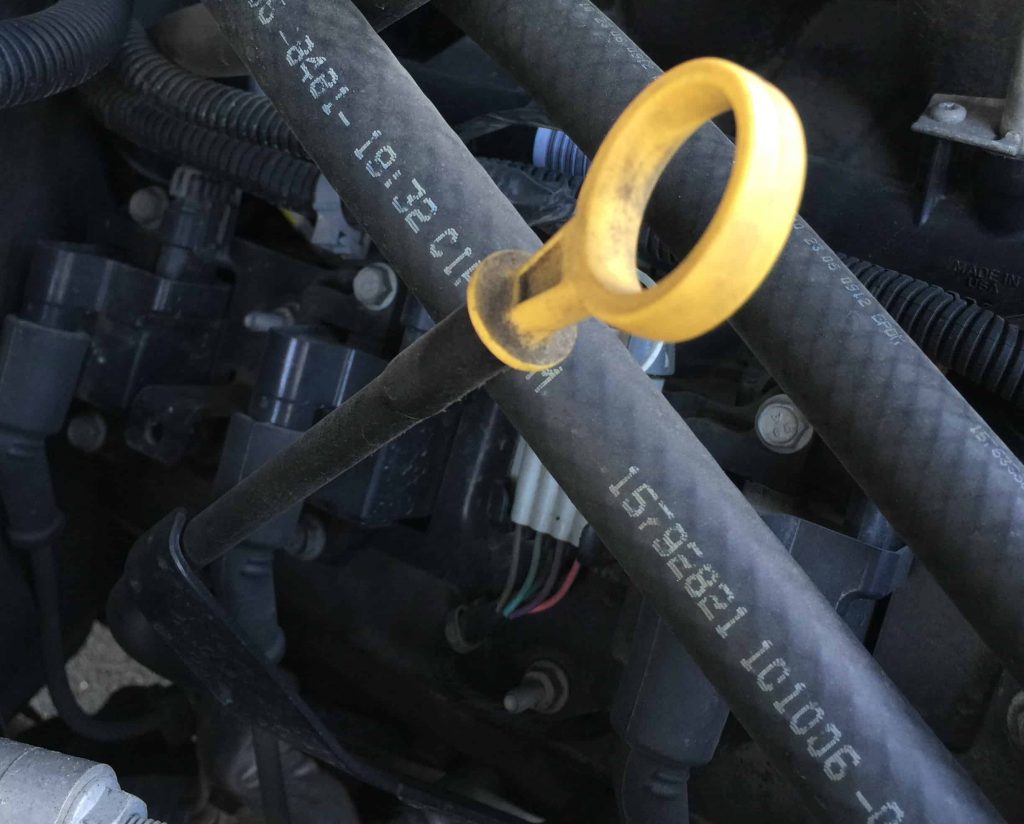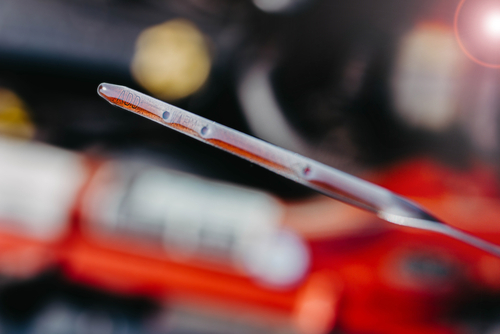This article will look at how to tell if your car has too much transmission fluid. We’ll also discuss what an excess of transmission fluid does to your vehicle.
Having too much transmission fluid in your vehicle can be just as bad as having not enough. Many folks notice their transmission fluid level is higher than it should be and think “hey I’ve got extra!”. When in fact, overfilling an automatic transmission can do extra damage too.
Your vehicle’s transmission fluid level needs to be to the full mark, not above it, and certainly not below it. It can be checked by looking at the indicator on the dipstick.

How to check your transmission fluid
Cars and other vehicles have a dipstick, which indicates how much transmission fluid there is. Too much transmission fluid isn’t a good thing. If you notice your transmission fluid levels are too high, you should take steps to rectify the situation; otherwise, it may cause further issues with your vehicle.
Prep the Vehicle
Make sure that your car or truck is parked on a level surface. Set the parking brake and make sure that the transmission is in “park”. Run the engine for a few minutes to get the fluids moving if the vehicle is cold.
If the vehicle is hot, make sure the you’ve driven it for at least a half hour before checking to let everything warm all the way up. It takes longer for a transmission to warm up than it does for an engine.
Locate the Dipstick

The transmission fluid dipstick is usually in a few key locations.
- On rear wheel drive vehicles it is usually by the firewall to the left of the engine.
- On front wheel drive vehicles, it’ll be in front of the engine, usually on the right. Sometimes it won’t be a dipstick at all, but rather a cap that you unscrew. The fluid level indicator will be attached to it.
Check the Fluid Level
Most dipsticks will have a “full hot” and a “full cold” indicator. Use them depending on whether or not the vehicle was warmed up first.

Add or Subtract Fluid if Needed
Adding fluid is easy enough. You’ll just need to use a small funnel to add the transmission fluid.
You can siphon the transmission fluid pretty easily as well. You just have to get a good siphon. They are usually rather inexpensive. Then you just run it down the dipstick tube and pull the fluid out until you get the proper reading.
Here’s a more in depth writeup on how to check transmission fluid.
Is too much transmission fluid bad?
Yes, too much transmission fluid is bad.
It’s crucial that your car has the correct amount of transmission fluid and that it’s kept in good condition. The transmission fluid flows through your vehicle’s transmission and keeps the gears lubricated, and the pressure inside the transmission is just as important. Too much fluid means too much pressure.
Transmission fluid needs to be changed on schedule as well. When checking your transmission fluid, check out our guide to transmission fluid color. It can tell you a lot about the health of your transmission.
Transmission fluid also stops your vehicle’s components from rubbing against each other. Your car requires the right amount of fluid so that its ability to maintain constant pressure inside the transmission.
Damage from too Much Transmission Fluid
Vehicles that have too much transmission fluid will have issues. An excess of fluid will cause pressure to build up in the transmission, which will mean the air can contaminate the fluid. When transmission fluid is mixed with air, it becomes frothy and ineffective. This can also cause the pressure to increase even more.
If your car has frothy transmission fluid, it will cause more severe issues for your vehicle. The frothy fluid will travel to the gearbox but will be ineffective when it comes to lubricating the gears. This will mean the clutches, bands, and gears will begin to grind against one another, and over time the gear will wear down. This will make it hard for the transmission to shift without experiencing a delay in the long run.
Too much transition fluid can also cause the transmission to overheat, as the gearbox won’t be fully lubricated. Overheating can be a severe issue as it can cause the seals to break, resulting in a fluid leak. This will make it difficult to change gear while driving and could potentially be very dangerous.
Too much fluid will result in an increased pressure, and over time, this will make your vehicle’s transmission wear down fast. Too much transmission fluid will shorten the lifespan of the transmission.
What are the signs of too much transmission fluid?
There are a few things to look out for, indicating that your transmission may have too much fluid. The most obvious sign is that the dipstick will show there is too much transmission fluid. Your dipstick reading can change over time as the fluid thins while you’re driving your car and thicken again a few hours after use. To get the most accurate reading, you should check the transmission fluid levels after you’ve driven your car.
Shifting Problems
Another sign that you have too much transmission fluid is that you may have problems changing your gears. If you notice there’s a delay or your car starts lurching forward, this indicates that there’s too much transmission fluid. Problems changing gears can cause excessive wear on your gears and transition system. This problem needs to be fixed as soon as possible.
A Grinding Noise
If you keep driving your car with an excess of transmission fluid, you’ll be likely to hear grinding noises when the transmission shifts. If your gears start to grind, don’t ignore the problems, as this could cause the transmission to breaks down. A grinding noise is one of the first signs that your gears are suffering from extreme wear and tear.
Conclusion: Too much transmission fluid is a bad thing
If you think your car might have too much transmission fluid, you should have it looked at by a professional. Don’t ignore the problem and continue to drive, as this is likely to make things worse. The best way to fix transmission problems is to remove any excess fluid. You may also like to have your transmission inspected by a professional mechanic to ensure it hasn’t suffered from any permanent damage.
